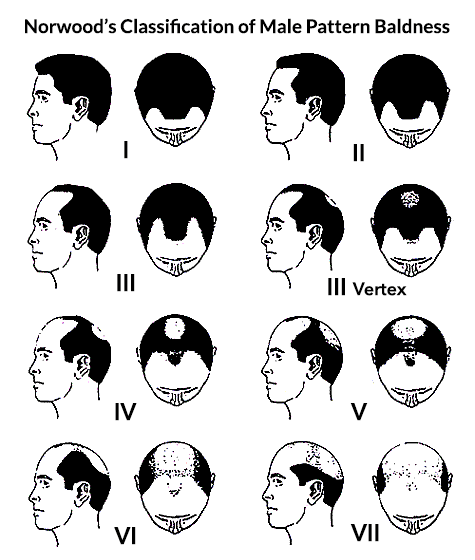
There are many conditions that contribute to or cause hair loss, but the most common cause, by far, is androgenetic alopecia.
Androgenetic alopecia is hair loss that is caused by a combination of genetics and hormones. It affects both sexes and is responsible for approximately 95 percent of hair loss in men and thinning in women. It starts at puberty, may not be noted for many years, and progresses over many years. The hair loss that is seen on the top of the scalp has basic patterns of loss with individual variations. These were first described by Dr. Hamilton, and then by Dr. O’tar Norwood. The Norwood Classification system is most commonly used to describe “male pattern baldness.” In a Norwood I, there is no indication of hair loss and this progresses to a Norwood VII, which has the most advanced hair loss pattern.
In androgenetic alopecia, hair on the top of the scalp is genetically programmed to thin and die when exposed to the hormone dihydrotestosterone (DHT), which is a breakdown of the natural occurring hormone testosterone. The hair on the sides and the back of the head is genetically programmed to resist the effects of DHT. Transplant surgeons realized early on that hair moved from the back of the scalp to the balding areas would grow indefinitely. This concept, called donor dominance, revolutionized the theory of surgical hair transplantation.
